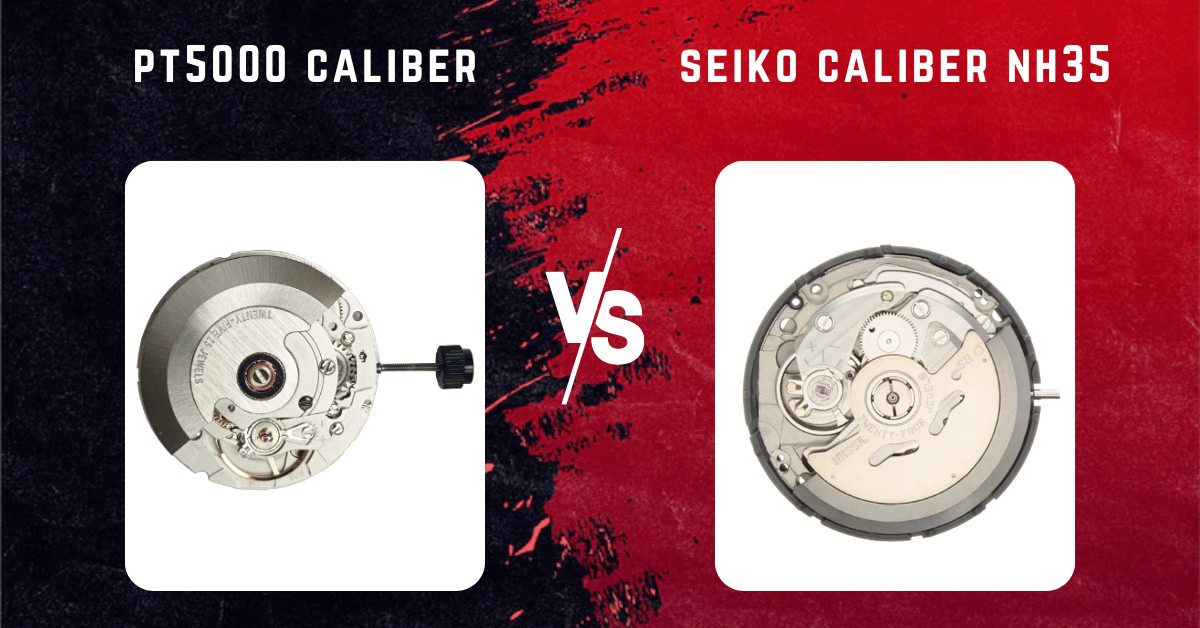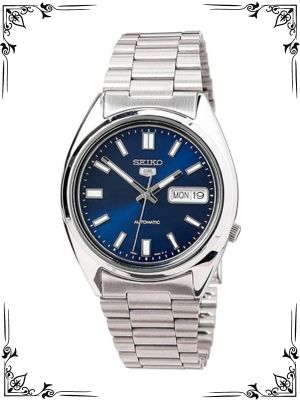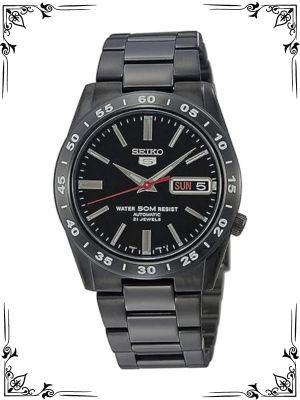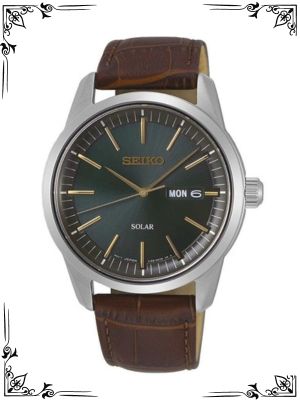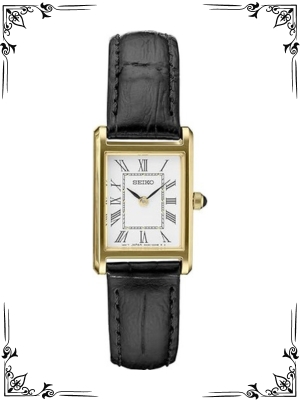The world of mechanical watches revolves around intricate mechanisms, with calibers taking center stage. Choosing the right caliber for your timepiece hinges on understanding its strengths and weaknesses. Today, we delve into the arena of two popular automatic movements: the PT5000 and the Seiko NH35.
Unveiling the Contenders: PT5000 vs NH35
PT5000 Caliber: This automatic movement is a derivative of the ETA 2824-2, a legendary Swiss caliber renowned for its reliability. Produced by Hangzhou Watch Co., Ltd. (Seagull) in China, the PT5000 boasts a modern design with a few key upgrades over its predecessor.
Seiko NH35 Caliber: A workhorse from the stables of Seiko Instruments Inc., the NH35 is a widely used automatic movement. Known for its affordability and robustness, it finds its place in numerous dive and everyday watches from Seiko and various microbrands.
Here’s a table summarizing the key specifications of both calibers:
| Feature | PT5000 Caliber | Seiko NH35 Caliber |
|---|---|---|
| Jewels | 21 | 21 |
| Beat Rate (bph) | 28,800 | 21,600 |
| Power Reserve | 40 hours | 41 hours |
| Hacking Seconds | Yes | Yes |
| Hand Winding | Yes | Yes |
| Date Function | Yes (quick-set) | Yes (quick-set) |
| Winding Mechanism | Bi-directional rotor | Unidirectional rotor |
| Height | 5.00 mm | 5.30 mm |
| Diameter | 26.00 mm | 27.00 mm |
Delving Deeper: A Feature-by-Feature Comparison
Heritage and Design:
The PT5000 draws inspiration from the ETA 2824-2, a proven design known for its longevity. Seiko, on the other hand, has developed the NH35 in-house, offering a reliable and readily available option.
Beat Rate and Smoothness:
The PT5000 boasts a higher beat rate (28,800 bph) compared to the NH35 (21,600 bph). This translates to a smoother sweeping motion of the second hand on the PT5000, potentially enhancing the visual appeal for some watch enthusiasts.
Power Reserve:
Both calibers offer a respectable power reserve, with the NH35 edging out the PT5000 by a single hour (41 hours vs. 40 hours). However, in real-world usage, this difference is often negligible.
Winding Mechanism:
The PT5000 utilizes a bi-directional rotor, meaning it winds the mainspring in both directions as it spins. The NH35 employs a unidirectional rotor, which only winds in one direction. While some argue bi-directional winding offers faster charging, the difference is usually minimal.
Serviceability and Availability:
The NH35 enjoys wider brand recognition and easier access for watchmakers. Replacement parts for the NH35 are generally more readily available and potentially less expensive compared to the PT5000.
Brand Reputation:
Seiko boasts a long-standing reputation for quality and reliability in the watchmaking industry. While Seagull is a respectable manufacturer, the NH35 might hold a slight edge in brand recognition for some consumers.
Pros and Cons: Weighing Your Options
PT5000 Caliber:
Pros:
- The higher beat rate for a smoother secondhand sweep.
- Bi-directional rotor for potentially faster winding.
- Slimmer profile compared to the NH35.
Cons:
- Less established brand name compared to Seiko.
- Potentially lower serviceability and parts availability.
Seiko NH35 Caliber:
Pros:
- Proven track record for reliability and durability.
- Wider availability of replacement parts and watchmakers familiar with the movement.
- Generally more affordable option.
Cons:
- Lower beat rate compared to the PT5000.
- The unidirectional rotor might take slightly longer to wind.
- Slightly thicker profile compared to the PT5000.
Picking a Winner: It Depends on Your Priorities
There’s no clear-cut winner between the PT5000 and NH35 calibers. The ideal choice hinges on your specific needs and preferences. Here’s a breakdown to help you decide:
Choose the PT5000 if:
- You prioritize a smoother secondhand sweep due to the higher beat rate.
- You appreciate a slimmer watch profile due to the PT5000’s reduced height.
- You’re open to exploring a potentially less ubiquitous brand in the watchmaking world.
Choose the Seiko NH35 if:
- Reliability and a proven track record are paramount for you.
- Easier serviceability and readily available replacement parts are important considerations.
- You’re on a budget and the NH35’s affordability is a factor.
FAQs
1. Are the PT5000 and NH35 calibers as accurate as Swiss movements?
Both calibers offer decent accuracy, typically ranging from -10 to +15 seconds per day. While some high-end Swiss movements boast superior precision, the difference might be negligible for everyday wear.
2. Can I upgrade my watch’s movement from NH35 to PT5000 (or vice versa)?
While theoretically possible, it’s not a common practice. The process can be expensive due to the watchmaker’s labor and potential part compatibility issues. Upgrading to a significantly different movement often requires extensive modifications to the watch case.
3. How often do I need to service my watch with either movement?
Regular servicing is crucial for maintaining your watch’s accuracy and longevity. The recommended service interval for both calibers typically falls between 5-7 years, depending on usage and environmental conditions.
4. Are there any other factors to consider when choosing a watch?
Beyond the movement, numerous aspects contribute to a watch’s overall quality and appeal. These include the case material, dial design, water resistance rating, brand reputation, and, of course, personal style.
5. Where can I find more information about these calibers?
Several online resources offer detailed specifications and discussions about the PT5000 and NH35 calibers. Watch forums, enthusiast websites, and manufacturer specifications can provide valuable insights.
Conclusion
The PT5000 and NH35 calibers are both solid choices for automatic watches, each offering distinct advantages. By understanding their strengths and weaknesses, you can make an informed decision that aligns with your watch preferences and budget. Remember, the ideal movement ultimately depends on what you value most in a timepiece.

